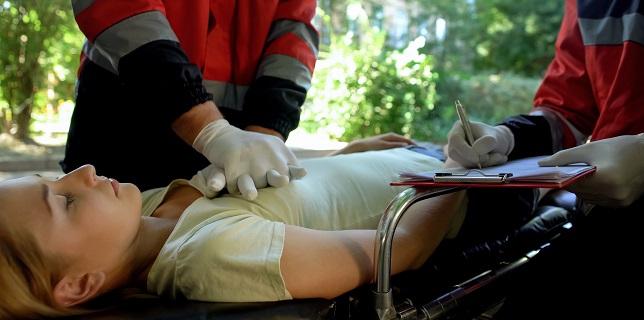Sudden Cardiac Death Is Often First CVD Presentation in Women
New data should be a call to action to better understand the underlying causes, as SCD rates rebound in women.

“When we look at the increase among women, it's composed mostly of 60% of women that were not known to have previous heart disease,” senior author Sumeet S. Chugh, MD (Smidt Heart Institute, Cedars-Sinai Health System, Los Angeles, CA), told TCTMD. “In these women, it looks like it was the first time their heart disease actually presented, and it was as a lethal or near-fatal event.”
In a research letter published in the February 18, 2020, issue of Circulation, Chugh and colleagues, led by Kyndaron Reinier, PhD, compared nearly 3,000 SCDs across three time periods: 2004-2007, 2008-2011, and 2012-2015. While the rates declined in the middle time period, they began climbing back up in the latter period. Although both sexes showed the U-shaped incidence pattern, it was much more pronounced in women. While men saw a decline of 21% followed by a rebound of 17%, women had a 30% decline followed by a 27% rebound, creating a nearly perfect U-shape.
Taking into account all cardiac arrests that occurred during the time period, the majority (63%) were in men. Among those, Chugh said there “no real surprises” since most had known heart disease.
Unique Perspective
The authors say reasons for the rebound, and how sex disparity plays into it, are likely multifactorial and require more study. “It's one condition, and it's almost universally lethal—except for the roughly 10% of people who survive—but it is complex and it’s probably going to have complex solutions as well,” Chugh observed.
Sudden cardiac arrest, in the end, is an electrical chaos. Sumeet S. Chugh
He further noted that SCD trends are difficult to study in traditional longitudinal ways. For that reason, Chugh and colleagues began the community-based Oregon Sudden Unexpected Death Study (Oregon SUDS) in 2002 to serve as a microcosm for capturing out-of-hospital SCD among all adults ages 18 and older. The unique collaboration within the Portland metropolitan area includes information that comes in through the 911 call system, hundreds of paramedics, the medical examiner’s office, law enforcement, and all hospital emergency rooms.
“It's pretty unusual to have this kind of access to information that includes everything that goes on in the community. We have a lifetime clinical history of every patient since they were born and until they had their cardiac arrest. We combine that with what's in their genome and in their blood,” Chugh said.
Since it began, Oregon SUDS has published roughly 80 papers on its efforts to track SCD in the population. Chugh said this latest one is a call to narrow in on better ways to intervene early in women.
“Sudden cardiac arrest, in the end, is an electrical chaos,” he said. “I think there are structural differences, but there probably also are differences in how the disease starts and progresses in men and women. We must really try to look for risk factors that are unique to women. We've got to look harder.”
L.A. McKeown is a Senior Medical Journalist for TCTMD, the Section Editor of CV Team Forum, and Senior Medical…
Read Full BioSources
Reinier K, Stecker EC, Uy-Evanado A, et al. Sudden cardiac death as first manifestation of heart disease in women: the Oregon Sudden Unexpected Death Study, 2004-2016. Circulation. 2020;141:606-608.
Disclosures
- The study was funded in part by the National Heart, Lung, and Blood Institute.
- Reinier and Chugh report no relevant conflicts of interest.


Comments